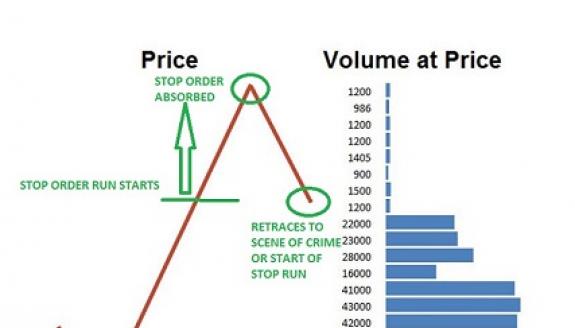
The general TIPS Fund can be included in your overall portfolio allocation. Research suggests that 20 percent of your portfolio's fixed income should be allocated. This will protect you from inflation and lower your risk during low inflation. However, you must consider your risk tolerance when choosing a TIPS fund. We will be discussing two types TIPS funds in this article. Below are some benefits of TIPS funds and tips on how to make educated decisions.
Vanguard Inflation-Protected Securities Fund
Vanguard Inflation Protected Security Fund aims to provide income and protection against inflation, as well as the same benefits of U.S.-indexed securities. The fund invests in Treasury inflation protected securities and nominal Treasury bonds that provide liquidity. Managers aim to position their portfolio along the yield curves of Treasury inflation-protected Securities to capitalize on inefficiencies within bond pricing. The fund provides unique portfolio diversification.

Although the fund is good for investors who want inflation protection, it comes with its own risks. There is high risk of interest-rate risk. A bond's value can change depending on changes to interest rates. Also, real returns may be negative even after beating inflation for a while. Vanguard Inflation-Protected Securities Fund's net assets are $41.2 billion. The 51 holdings are of varying maturities, yields, and have been accumulated by Vanguard Inflation-Protected Securities Fund.
Individual TIPS
A TIPS mutual fund, or ETF, is a great choice if you are looking for long-term investment strategies. A TIPS bond offers a fixed rate for its entire life, but an individual TIPS fund can offer a variable rate of returns with different maturities. Knowing your fund's expected after-inflation return is extremely useful, especially if there are cash outlays in retirement or college.
Owners of TIPS mutual funds are subject to income tax on the adjusted annual income. They don't receive the adjusted portion as a dividend or interest payment. Many TIPS mutual funds do, however, pay dividends to investors who are eligible for tax-deferred accounts. Even if the dividend is reinvested, income from TIPS mutual funds is taxed. TIPS fund owners often keep TIPS in retirement accounts.
Vanguard Inflation-Protected Securities
TIPS is a good way to protect yourself from inflation. TIPS are bonds whose principal values adjust for inflation. Inflation-protected security tend to gain in value. TIPS can be subject to risk. The market value of the TIPS may fall during periods of low inflation, bringing down the fund's net asset value. This fund is not appropriate for people who are sensitive to share price fluctuations, precarious work, or have financial difficulties.

TIPS investing is a great way for inflation protection and to still have diversified portfolios. The Vanguard Inflation-Protected Securities Tips Fund invests mainly in U.S. Treasury inflation-protected securities, with some allocations to nominal Treasury bonds for liquidity management. Managers try to position the portfolio holdings along the Treasury inflation-protected securities yield curve to take advantage of inefficiencies in bond pricing. As a result, this fund offers investors unique portfolio diversification benefits.
FAQ
How can people lose their money in the stock exchange?
The stock market is not a place where you make money by buying low and selling high. It's a place you lose money by buying and selling high.
The stock market is an arena for people who are willing to take on risks. They are willing to sell stocks when they believe they are too expensive and buy stocks at a price they don't think is fair.
They expect to make money from the market's fluctuations. If they aren't careful, they might lose all of their money.
Why are marketable securities important?
An investment company's primary purpose is to earn income from investments. It does so by investing its assets across a variety of financial instruments including stocks, bonds, and securities. These securities have attractive characteristics that investors will find appealing. They may be considered to be safe because they are backed by the full faith and credit of the issuer, they pay dividends, interest, or both, they offer growth potential, and/or they carry tax advantages.
It is important to know whether a security is "marketable". This is how easy the security can trade on the stock exchange. A broker charges a commission to purchase securities that are not marketable. Securities cannot be purchased and sold free of charge.
Marketable securities can be government or corporate bonds, preferred and common stocks as well as convertible debentures, convertible and ordinary debentures, unit and real estate trusts, money markets funds and exchange traded funds.
These securities are a source of higher profits for investment companies than shares or equities.
What are the pros of investing through a Mutual Fund?
-
Low cost - buying shares directly from a company is expensive. It's cheaper to purchase shares through a mutual trust.
-
Diversification is a feature of most mutual funds that includes a variety securities. If one type of security drops in value, others will rise.
-
Professional management - Professional managers ensure that the fund only invests in securities that are relevant to its objectives.
-
Liquidity is a mutual fund that gives you quick access to cash. You can withdraw your funds whenever you wish.
-
Tax efficiency - mutual funds are tax efficient. So, your capital gains and losses are not a concern until you sell the shares.
-
Buy and sell of shares are free from transaction costs.
-
Mutual funds can be used easily - they are very easy to invest. All you need is a bank account and some money.
-
Flexibility - you can change your holdings as often as possible without incurring additional fees.
-
Access to information - You can view the fund's performance and see its current status.
-
Investment advice – you can ask questions to the fund manager and get their answers.
-
Security - Know exactly what security you have.
-
You have control - you can influence the fund's investment decisions.
-
Portfolio tracking - you can track the performance of your portfolio over time.
-
You can withdraw your money easily from the fund.
Investing through mutual funds has its disadvantages
-
Limited selection - A mutual fund may not offer every investment opportunity.
-
High expense ratio - the expenses associated with owning a share of a mutual fund include brokerage charges, administrative fees, and operating expenses. These expenses can impact your return.
-
Lack of liquidity - many mutual fund do not accept deposits. They must only be purchased in cash. This limits the amount that you can put into investments.
-
Poor customer service: There is no single point of contact for mutual fund customers who have problems. Instead, you will need to deal with the administrators, brokers, salespeople and fund managers.
-
Risky - if the fund becomes insolvent, you could lose everything.
Why is a stock called security?
Security is an investment instrument that's value depends on another company. It may be issued either by a corporation (e.g. stocks), government (e.g. bond), or any other entity (e.g. preferred stock). The issuer can promise to pay dividends or repay creditors any debts owed, and to return capital to investors in the event that the underlying assets lose value.
What are the benefits to owning stocks
Stocks are more volatile than bonds. When a company goes bankrupt, the value of its shares will fall dramatically.
However, if a company grows, then the share price will rise.
Companies often issue new stock to raise capital. This allows investors buy more shares.
To borrow money, companies can use debt finance. This gives them cheap credit and allows them grow faster.
People will purchase a product that is good if it's a quality product. The stock price rises as the demand for it increases.
The stock price will continue to rise as long that the company continues to make products that people like.
Statistics
- Individuals with very limited financial experience are either terrified by horror stories of average investors losing 50% of their portfolio value or are beguiled by "hot tips" that bear the promise of huge rewards but seldom pay off. (investopedia.com)
- "If all of your money's in one stock, you could potentially lose 50% of it overnight," Moore says. (nerdwallet.com)
- For instance, an individual or entity that owns 100,000 shares of a company with one million outstanding shares would have a 10% ownership stake. (investopedia.com)
- Even if you find talent for trading stocks, allocating more than 10% of your portfolio to an individual stock can expose your savings to too much volatility. (nerdwallet.com)
External Links
How To
How to make your trading plan
A trading plan helps you manage your money effectively. It allows you to understand how much money you have available and what your goals are.
Before you create a trading program, consider your goals. It may be to earn more, save money, or reduce your spending. You might consider investing in bonds or shares if you are saving money. If you are earning interest, you might put some in a savings or buy a property. And if you want to spend less, perhaps you'd like to go on holiday or buy yourself something nice.
Once you have a clear idea of what you want with your money, it's time to determine how much you need to start. This depends on where you live and whether you have any debts or loans. You also need to consider how much you earn every month (or week). Your income is the amount you earn after taxes.
Next, you will need to have enough money saved to pay for your expenses. These include rent, food and travel costs. Your monthly spending includes all these items.
You'll also need to determine how much you still have at the end the month. This is your net income.
Now you've got everything you need to work out how to use your money most efficiently.
To get started with a basic trading strategy, you can download one from the Internet. Or ask someone who knows about investing to show you how to build one.
Here's an example: This simple spreadsheet can be opened in Microsoft Excel.
This displays all your income and expenditures up to now. This includes your current bank balance, as well an investment portfolio.
Here's another example. This one was designed by a financial planner.
It will allow you to calculate the risk that you are able to afford.
Don't try and predict the future. Instead, you should be focusing on how to use your money today.